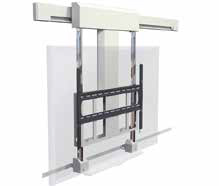In today’s challenging higher education market, technology managers and IT departments are wearing more hats than ever before simply to ensure they are able to complete projects that meet or even exceed budgeted cost and time expectations. Many phases of a higher education system integration project tend to overlap and, as the lines blur, productivity typically depreciates.
Data and system design company D-Tools believes that it addresses three different areas of the systems integration process within higher-education infrastructures where technology managers and IT departments face potential pitfalls, and how implementing a solid, data-driven software solution can help overcome them. Estimation, system design, and project management—all crucial to the systems integration process—are often managed separately or not at all. However, when these project phases are managed with a software application and dynamically linked together by product data, the benefits become immediately apparent.
SYSTEM INTEGRATOR SOFTWARE SOLUTION
D-Tools System Integrator (SI) is an estimation, design, and project management software solution that fits the needs of higher education facilities, large or small. A robust business process automation solution, d-tools says that its SI helps increase productivity while reducing time and costs associated with the design, installation, and integration of AV, energy, automation, lighting, security, and IT/networking systems.
ESTIMATION
Estimation can be difficult as it can often be challenging to find essential products for a given project, and can also be extremely time consuming. When each proposal consists of repetitive tasks, copying, pasting, and locating necessary products, it can easily lead to overlooked equipment needs and underestimated labor time that results in confusion and lack of support for the project. Furthermore, without proper project estimation, proposals may be incomplete and inaccurate.
It can also be difficult to accurately determine budget adherence per project. Allocated time per project phase can be under-estimated and common project materials, such as wire connectors, can be overlooked and when tallied up, potentially result in significant job cost expansion.
Implementing a systems integration software solution can help with the creation of fast, accurate proposals. Because all pricing and product data is driven from a constantly updated database—where all of the information is readily accessible—system designers and internal teams can dramatically reduce the time it takes to research products for proposals, which in turn provides everyone the ability to react to requests more quickly thereby ensuring the best chance to complete additional projects.
SYSTEM DESIGN
Successful IT groups, tech managers, and system integration companies working with Universities establish a series of project phases in order to complete projects satisfactory to the educational institutes’ expectations and system design is no exception. This particular project phase is extremely important because it’s the clearest way to communicate the parameters of the project to the higher education decision makers as well as to in‐house install team members. Concise designs provide a guide for the project installers and team members or subcontractors to follow, ensuring accurate and efficient project execution.
While some Universities have an in-house Engineering resource to create system designs, others outsource their design work and some completely omit this phase altogether, which is never a good practice. By including professional system designs in proposals, the overall readability and aesthetic of those proposals will not only be dramatically boosted, a tangible representation will be provided of their finished system so they are able to visualize the results of the end product. Having a solid system design in place can easily be the differentiator that helps solidify the project. Read more about D-Tools and the System Integrator solution at www.d-tools.com.
Mounting Flexibility for Interactive Displays
PREMIER MOUNTS FLAT-PANEL LCD SLIDER MOUNT: FPS-300
• Works with interactive display panels
• Motorized lifting and lowering system with 18 inches of adjustment
• Includes eight feet of track
• Built in lateral shift on wall plate
• Integrated cable management
• Ideal for educational uses in the classroom or corporate training
• VESA mounting patterns
• List: $3,230.00
• www.mounts.com











